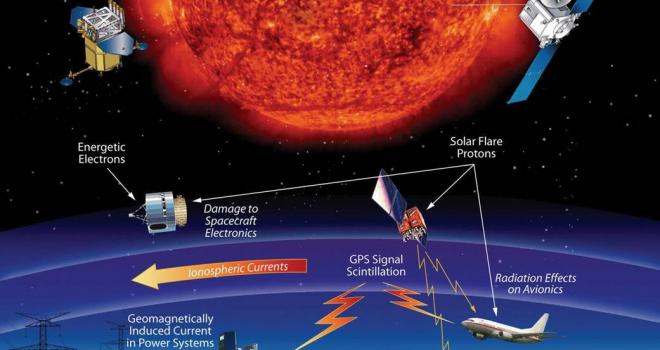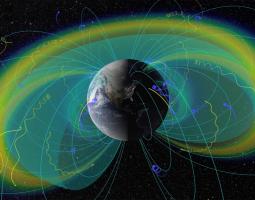Space Weather
Though space is about a thousand times emptier than even the best laboratory vacuums on Earth, it’s not completely devoid of matter – the sun’s constant outflow of solar wind fills space with a thin and tenuous wash of particles, fields, and plasma. This solar wind, along with other solar events like giant explosions called coronal mass ejections, influences the very nature of space and can interact with the magnetic systems of Earth and other worlds. Such effects also change the radiation environment through which our spacecraft – and, one day, our astronauts headed to Mars – travel. The space environment around Earth can also vary wildly in response to the sun. Such space weather can interfere with satellite electronics, communications and GPS signals, and even – when extreme – utility grids on Earth.
NASA observes the sun and our space environment nearly 24-seven with a fleet of solar observatories – studying everything from the dynamics of the sun, to the solar atmosphere, to the particles and magnetic fields in the space surrounding our home planet. Collectively, such observations help us understand the physical processes behind what we are observing and are helping to create better simulations of this complex system and ultimately better protect our technology and astronauts from space weather.
All of NASA's current heliophysics missions contribute to better understanding the physical processes that are driving the space environment around Earth and throughout the solar system. The following missions are particularly focused on improving our understanding of space weather: the Advanced Composition Explorer and NOAA's Deep Space Climate Observatory, which observe the solar wind; the Solar Dynamics Observatory, the Solar and Terrestrial Relations Observatory, the joint ESA/NASA Solar and Heliospheric Observatory, which can all observe solar eruptions on the sun; and the Van Allen Probes, which observes the radiation belts around Earth.
NASA heliophysics works as the research arm of the nation's space weather effort, coordinating with the U.S. National Oceanic and Atmospheric Administration, the National Science Foundation and the U.S. Geological Survey, and the U.S. Air Force Research Laboratory on the National Space Weather Action Plan. In addition to research missions, NASA also supports improvements in space weather prediction models, such as those used by NOAA's Space Weather Prediction Center, the U.S. government's official source for space weather forecasts.
Technological infrastructure affected by space weather events include satellites, aircraft, and power grids. Studying the causes and effects of space weather can help us to better predict these events and to take precautions to minimize their impacts. View full image
Credit: NASA





